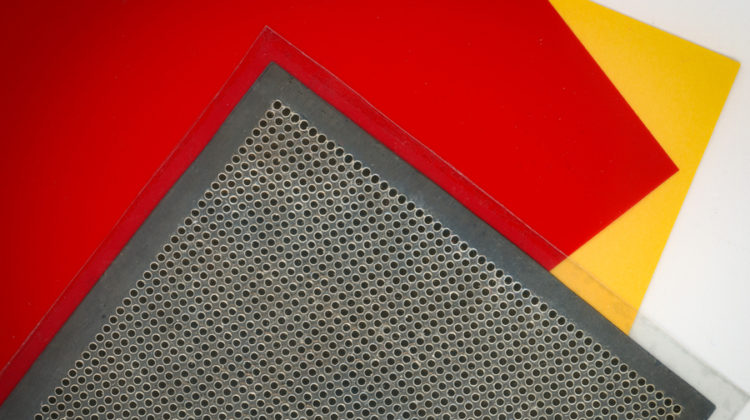
A team of engineers at MIT has developed a paper-thin loudspeaker that can turn any surface into an active audio source.
The innovative thin-film loudspeaker produces sound with minimal distortion while using a fraction of the energy required by a traditional loudspeaker. The hand-sized loudspeaker that the team demonstrated, which weighs a bit more than two grams, can generate high-quality sound regardless of the surface to which it’s bonded to.
To achieve these properties, the researchers pioneered a deceptively simple fabrication technique that requires only three basic steps and can be scaled up to produce ultra-thin loudspeakers large enough to cover the inside of a car or to wallpaper a room.
Potential applications for the speaker include active noise cancellation in clamorous environments, such as an airplane cockpit; immersive entertainment, perhaps by providing 3D audio in a theatre; and in smart devices with limited battery life.
‘It feels remarkable to take what looks like a slender sheet of paper, attach two clips to it, plug it into the headphone port of your computer and start hearing sounds emanating from it,’ said Vladimir Bulović, the Fariborz Maseeh chair in emerging technology at MIT. ‘It can be used anywhere. One just needs a smidgeon of electrical power to run it.’
A typical loudspeaker generates a magnetic field by passing an electric current through a coil of wire. This moves a speaker membrane, which moves the air above it, creating the sound that we hear. By contrast, the new loudspeaker simplifies the speaker design by using a thin film of a shaped piezoelectric material that moves when voltage is applied over it, which moves the air above it and generates sound.
Most thin-film loudspeakers are designed to be freestanding because the film must bend freely to produce sound. Mounting these loudspeakers onto a surface would impede the vibration and hamper their ability to generate sound.
To overcome this problem, the MIT team rethought the design. Rather than having the entire material vibrate, their design relies on tiny domes, each only a few hair-widths across, that vibrate individually. The domes sit on a thin film of piezoelectric material. They are surrounded by spacer layers on the top and bottom of the film that protect them from the mounting surface while still enabling them to vibrate freely. The same spacer layers protect the domes from abrasion and impact during day-to-day handling, enhancing the loudspeaker’s durability.
To build the loudspeaker, the researchers used a laser to cut tiny holes into a thin sheet of PET plastic. They then laminated the underside of the perforated PET layer with a very thin film (as thin as eight microns) of a piezoelectric material called PVDF, before applying a vacuum above the bonded sheets and an 80°C heat source beneath them.
Because the PVDF layer is so thin, the pressure difference created by the vacuum and heat source caused it to bulge. The PVDF can’t force its way through the PET layer, so tiny domes protrude through the perforations. The researchers then laminate the other side of the PVDF with another PET layer to act as a spacer between the domes and the bonding surface.
‘This is a very simple, straightforward process,’ said Jinchi Han, a postdoc in Bulović’s lab. ‘It would allow us to produce these loudspeakers in a high-throughput fashion if we integrate it with a roll-to-roll process in the future. That means it could be fabricated in large amounts.’
The domes are 15 microns tall and only move up and down about half a micron when they vibrate. Each dome is a single sound-generation unit, so it takes thousands of them vibrating together to produce audible sound.
By changing the size of the holes in the PET, the researchers can control the size of the domes. Domes with a larger radius displace more air and produce more sound, but they also have a lower resonance frequency, so audio distortion is increased.
The researchers tested the loudspeaker by mounting it to a wall 30 centimetres from a microphone to measure the sound pressure level. When 25 volts of electricity were passed through the device at one kilohertz, the speaker produced high-quality sound at conversational levels of 66 decibels. At ten kilohertz, the sound pressure level increased to 86 decibels, about the same volume level as city traffic.
The device only requires about 100 milliwatts of power per square metre of speaker area. By contrast, an average home speaker might consume more than one watt of power to generate similar sound pressure at a comparable distance.
‘We have the ability to precisely generate mechanical motion of air by activating a physical surface that is scalable. The options of how to use this technology are limitless,’ Bulović said.
The research has been published in IEEE Transactions of Industrial Electronics.


